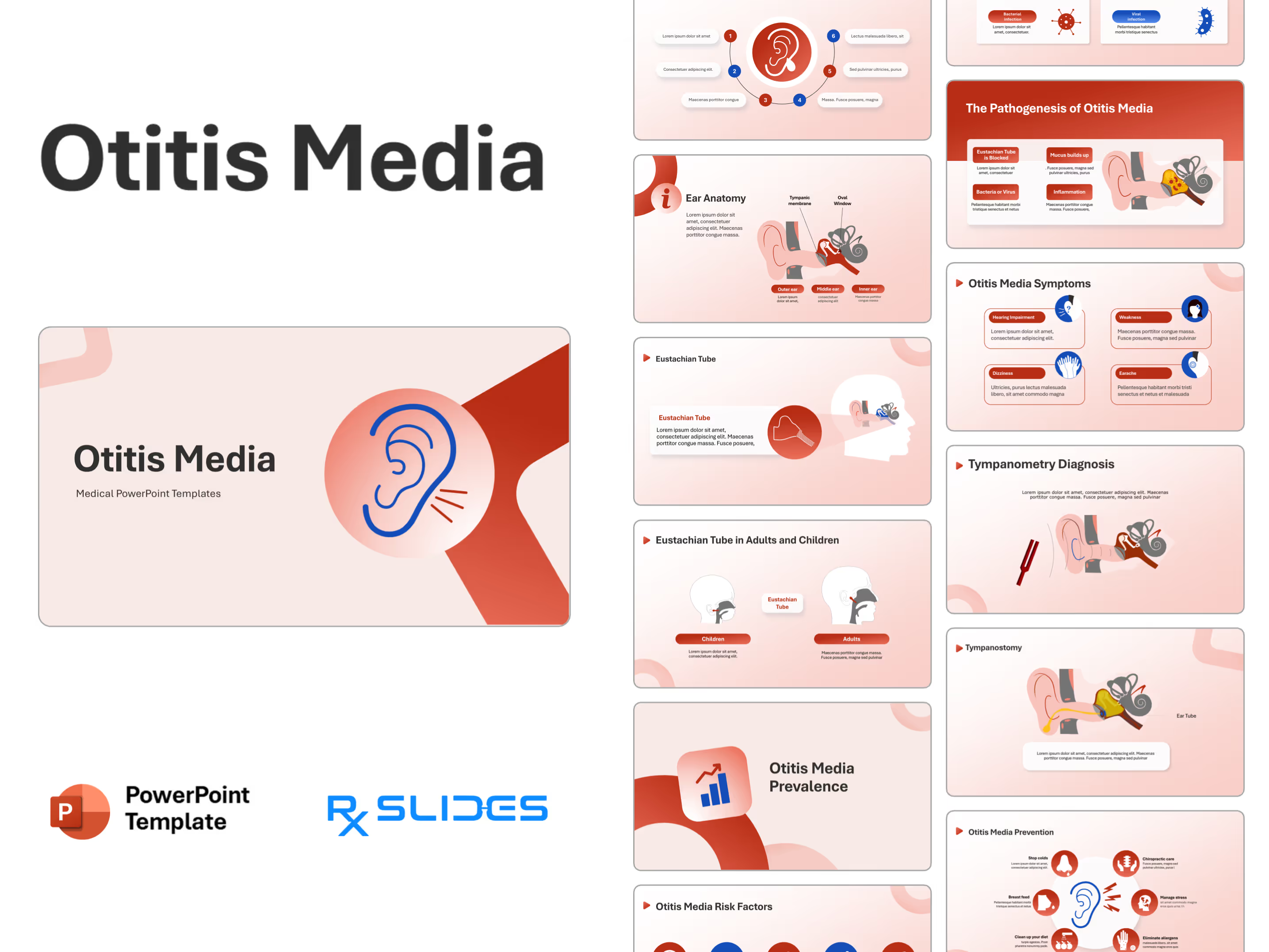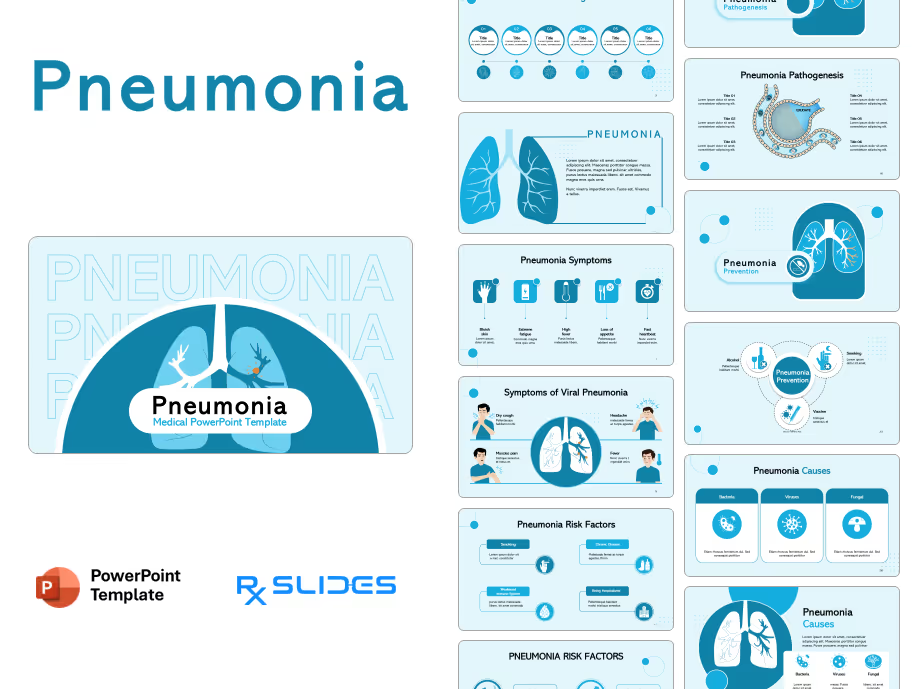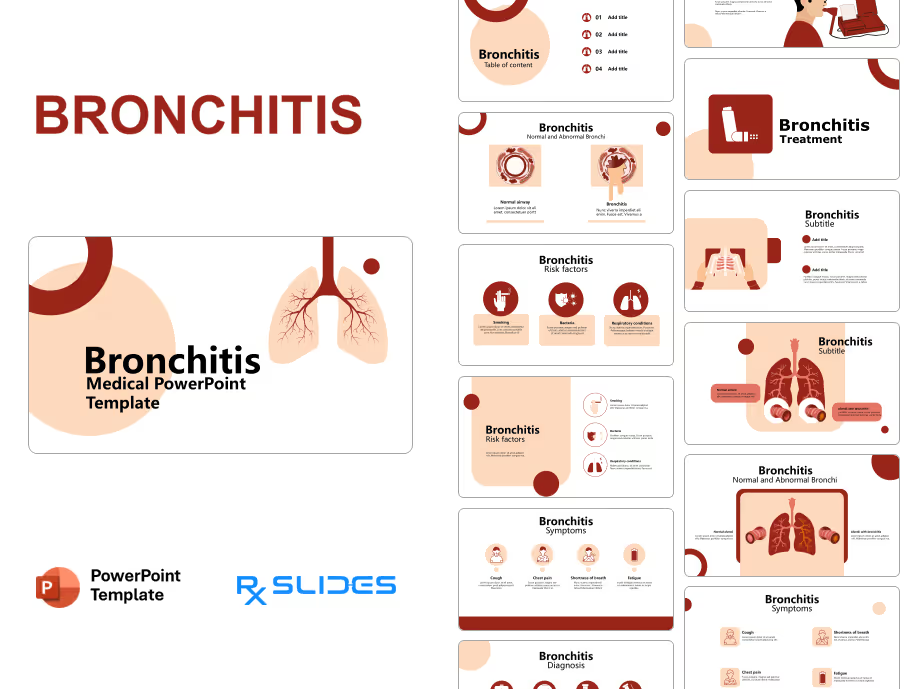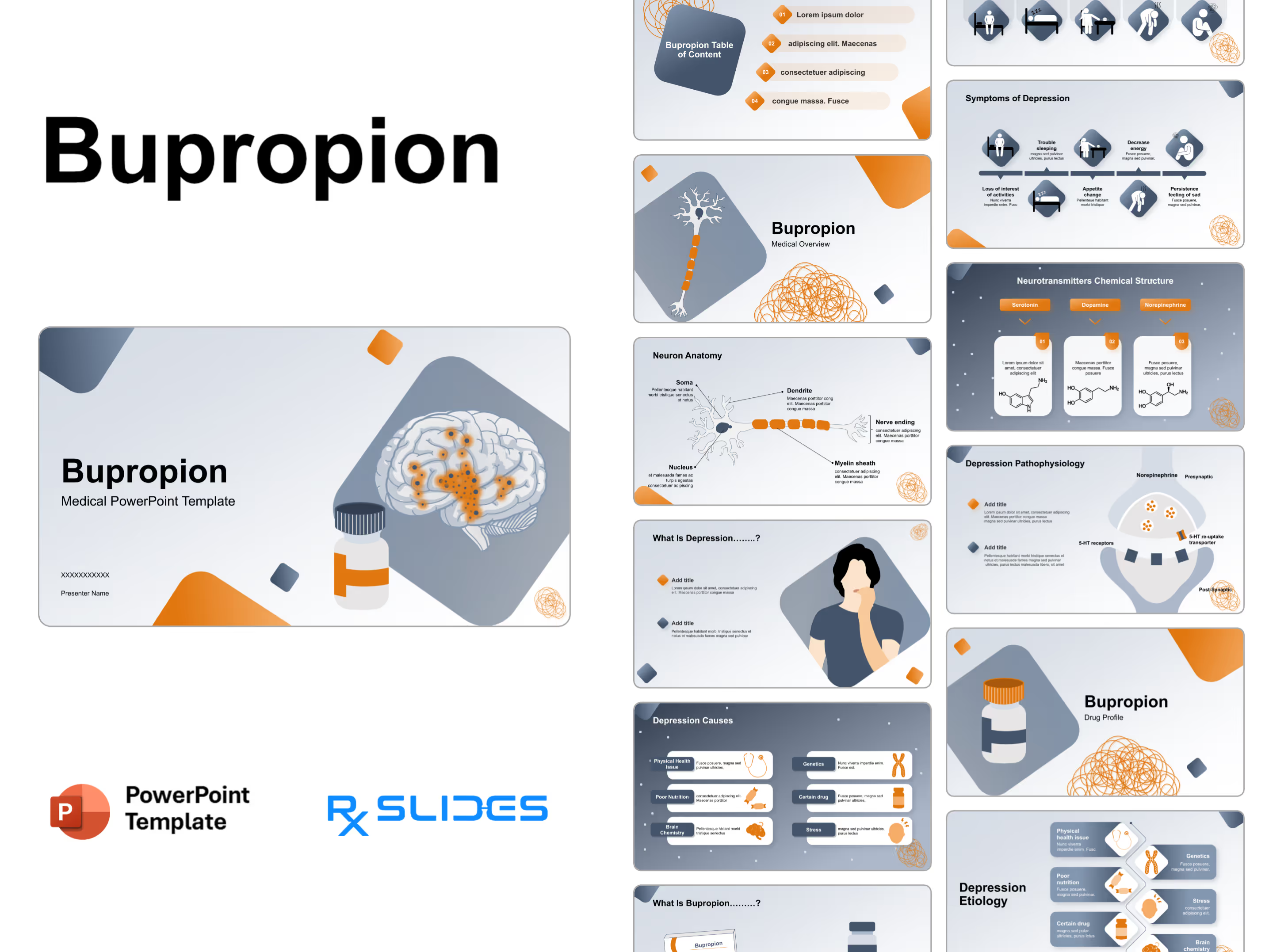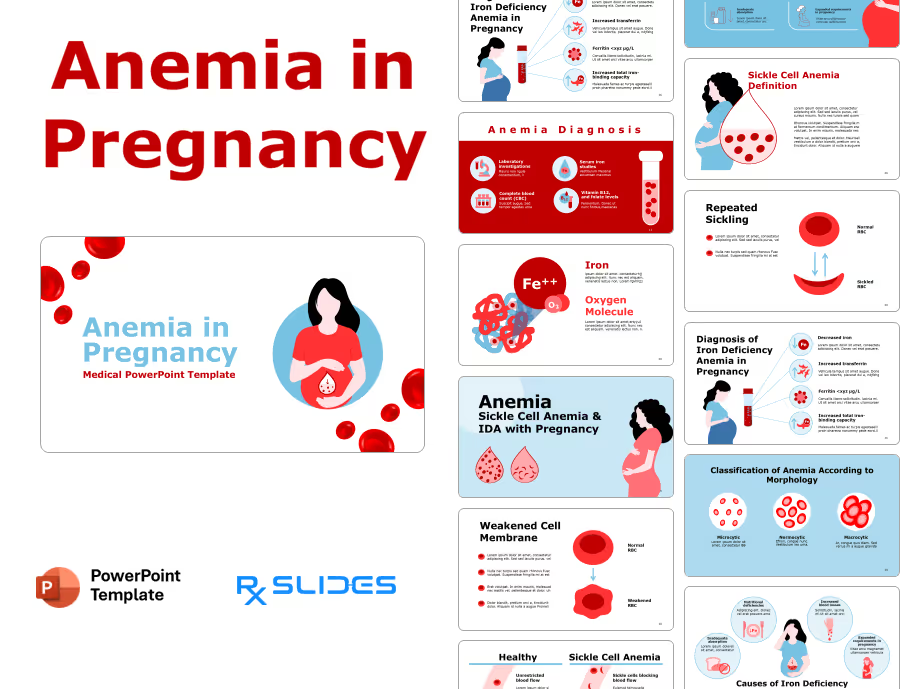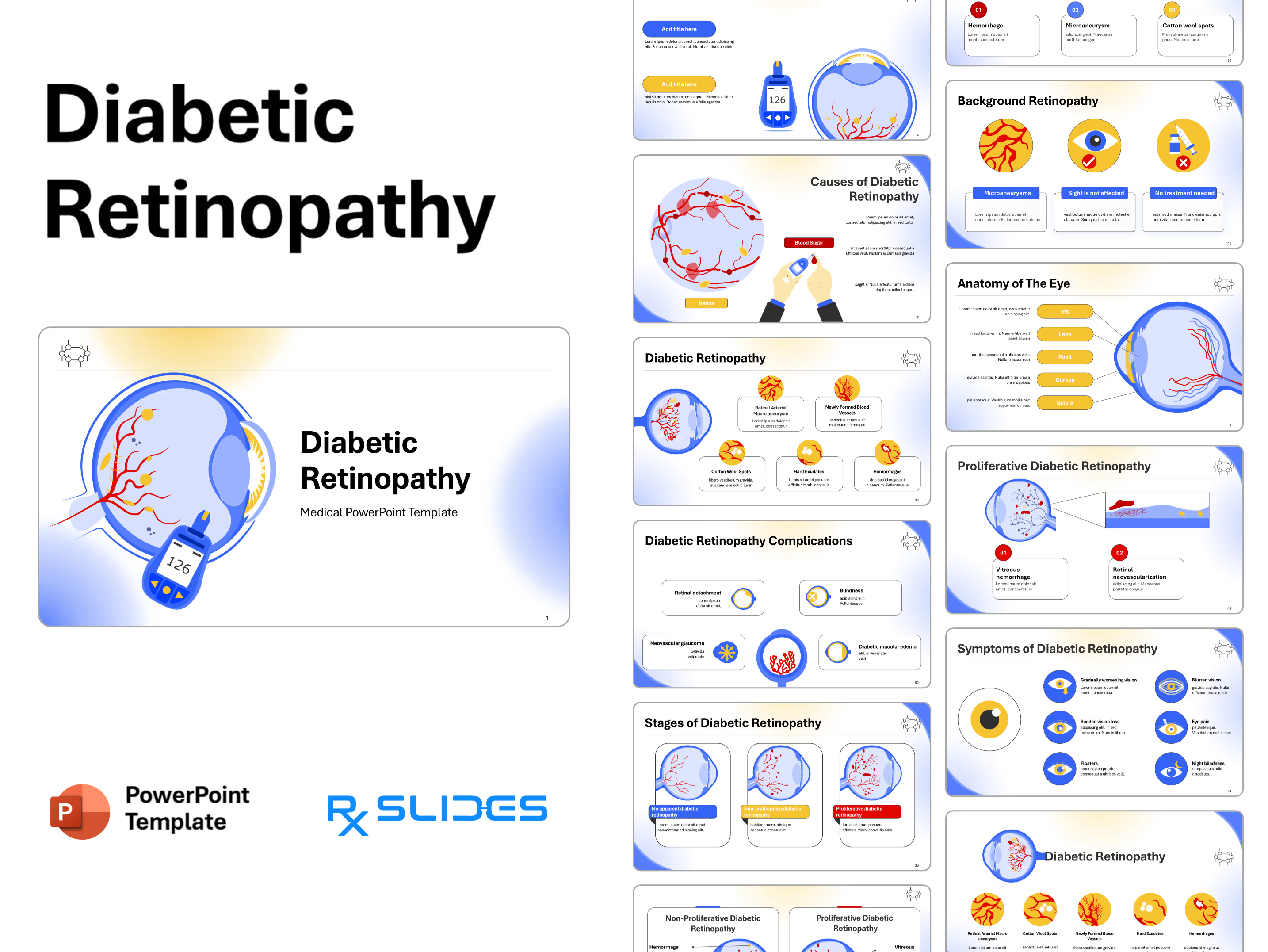Acyclovir PowerPoint Template

Acyclovir PPT Template: Animated Medical PowerPoint
- The Acyclovir PPT template is a dynamic medical PowerPoint template designed by RxSlides' medical professionals.
- This presentation, with animated illustrations, will bring the mechanism of action of Acyclovir to life.
- This animated template is your key to unlocking the science behind Acyclovir's effectiveness with the following benefits:
- Visualize the step-by-step process by which acyclovir targets and disrupts viral replication.
- Gain a deeper understanding of its impact on viral DNA synthesis.
- Impress your audience with clear and concise explanations supported by engaging visuals.
Acyclovir PPT Template Content
- Nice looking cover slides to start your Acyclovir PPT template presentation with.
.avif)
- Editable table of contents that will help you explain the contents of your Acyclovir PPT template presentation.
.avif)
Herpes virus infection overview with illustrations
- We begin our Acyclovir PPT template with introductory medical slides explaining the structure of the Herpes virus and comparative illustrations for different types.
.avif)
Acyclovir overview
- This section discusses the Acyclovir definition of Acyclovir as a class of antiviral medications called synthetic nucleoside analogs.
- This section also provides you with the chemical structure and dosage forms.
- Acyclovir is available in the market under the Zovirax, produced by GSK.
- Zovirax is available in different pharmaceutical dosage forms: 200, 400 and 800 mg tablets, oral suspension and topical cream.
.avif)
Indications of acyclovir
- The indications are visualized in this animated Acyclovir PPT template with medical icons, including Herpetic keratitis, Varicella zoster, Herpes simplex and Herpes labialis.
.avif)
Contraindications of acyclovir
- You can notice that we explained the contraindications of Acyclovir with medical illustrations for renal failure cases, Hemolytic uremic syndrome, Thrombotic thrombocytopenic purpura and Immunocompromised host.
.avif)
Herpes viruses overview
- Herpes viruses show a complex replication cycle within infected cells. Here is a breakdown of the steps, presented in a clear and organized manner in our Acyclovir PPT template with animated illustrations:
Entry:
- The virus binds to various receptors on the host cell membrane.
- The viral envelope fuses with the cell membrane, releasing the viral capsid into the cytoplasm.
Immediate-early gene expression:
- A viral protein called virion host shutoff (VHS) degrades host cell mRNA, freeing up cellular resources for viral use.
- Another viral protein, VP16, protects viral mRNA and activates "immediate-early genes" at the nuclear pore.
- These immediate-early genes start the lytic infection pathway.
Early gene expression:
- Immediate-early gene products re-enter the nucleus and activate another set of genes called "early genes."
- Early gene mRNA travels to the cytoplasm, where ribosomes translate them into proteins.
Viral DNA replication:
- Early proteins include a viral DNA polymerase, which replicates circular viral DNA along with other proteins.
- New viral genomes are produced using the rolling circle method, generating multiple copies.
Late gene expression and virion assembly:
- Newly synthesized DNA expresses "late-stage mRNA," which exits the nucleus for translation.
- Some late-stage mRNA encodes capsid proteins, translated on free ribosomes in the cytoplasm.
- Other late-stage mRNA encodes envelope proteins, translated on ribosomes on the endoplasmic reticulum.
- Late-stage proteins re-enter the nucleus and assemble into capsids, capturing viral DNA genomes.
Virion maturation and release:
- Capsid-DNA complexes bud through the inner nuclear membrane, getting a single membrane envelope.
- The developing virion travels through the endoplasmic reticulum and Golgi apparatus, acquiring additional modifications.
- Finally, the complete virion buds off the Golgi apparatus and fuses with the plasma membrane, exiting the cell and ready to infect new cells.
.avif)
Acyclovir mechanism of action
- We explained The Acyclovir mechanism of action in this Acyclovir PowerPoint template with animated illustrations.
- The animation explains that Acyclovir competitively inhibits viral DNA polymerase by acting as an analog to deoxyguanosine triphosphate (dGTP).
- As you can see from the illustrations, the incorporation of acyclovir triphosphate into DNA results in chain termination.
.avif)
Acyclovir pharmacokinetics
- Acyclovir pharmacokinetics slides, including charts and medical graphs you can use to visualize Acyclovir bioavailability, metabolism and excretion.
.avif)
Adverse effects of acyclovir
- Acyclovir's adverse effects are explained with visuals of nausea, vomiting, rash and abdominal pain.
.avif)
Toxicity of acyclovir
- The toxicity of Acyclovir is illustrated in the Acyclovir PPT template; according to the National Institute of Health (NIH), the toxicity includes acute kidney injury.
Acyclovir clinical studies with a medical infographic
- This section provides medical slides for Acyclovir clinical studies and a medical infographic to help you deal with your data.
- You can make a comparison with market competitors with charts and medical graphs.
.avif)
RxSlides visuals for acyclovir PowerPoint template
- RxSlides provides you with a Set of PowerPoint illustrations and medical infographics related to Acyclovir disease, which will help you customize the content of this 100% editable presentation according to your content and audience interest.

Features of the Template
- 100% editable PowerPoint template.
- Editable colors, you can change according to your presentation style and company branding guidelines.






